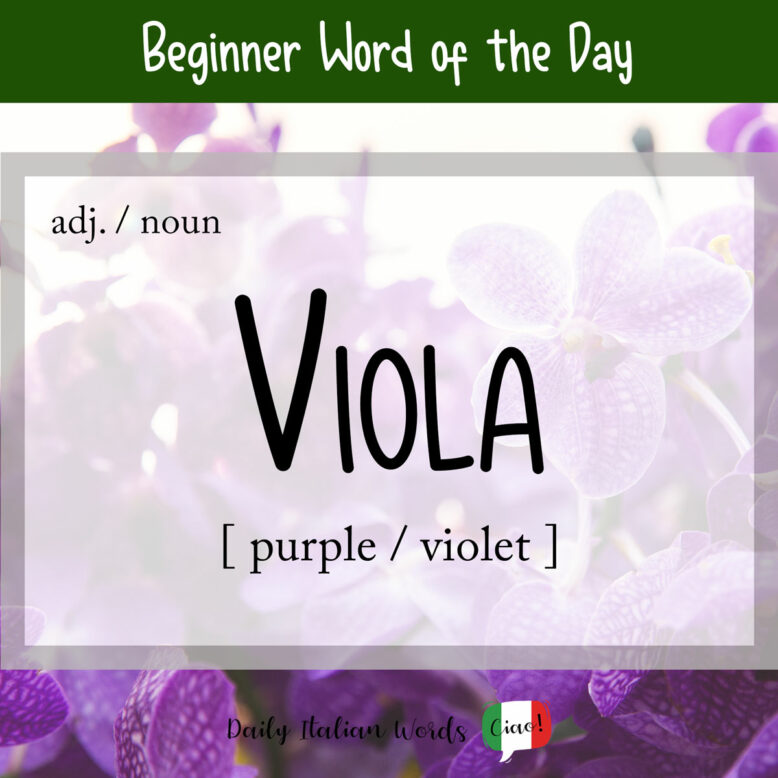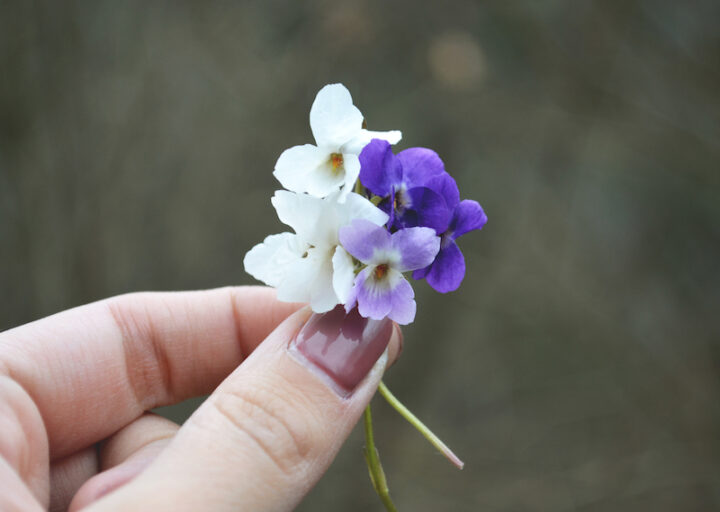The colour purple is known as viola in Italian. It comes from the Latin word of the same spelling.

When used as an adjective, it remains invariable, or in other words, it has the same form in both the singular and the plural. For example:
- un vestito viola = a purple dress (masculine, singular)
- una gonna viola = a purple skirt (feminine, singular)
- dei vestiti viola = purple dresses (masculine, plural)
- delle gonne viola = purple skirts (feminine, plural)

When used as a noun, it is always masculine (il viola) despite ending in the letter a.
Il colore preferito di mia moglie è il viola.
My wife’s favourite colour is purple.
Conosco qualcuno che si veste sempre di viola.
I know someone who always wears purple.
Note: Occasionally you may see the colour purple incorrectly translated as porpora whereas in actual fact, porpora is more of a dark red colour. (That said, both purple and porpora can be traced back to the Latin purpura meaning purple.) Another word you’ll see translated as purple is violetto but this is actually violet in Italian.
Viola is also the common name used to indicate plants of the Viola genus of the Violacee family including pansies and violets.

As in English, it may also denote the instrument of the violin family. A modern viola is known as a viola da braccio (lit: viola for the arm) whereas a viol is known as a viola da gamba (lit: viola for the leg).
Did you know that…?
La squadra viola is the nickname for the “Fiorentina football team” which is based in Firenze. The tifosi viola are the Fiorentina supporters. The reason for these nicknames, as you’ve probably guessed already, comes from the fact that the official uniform of the team is purple.
Heather Broster is a graduate with honours in linguistics from the University of Western Ontario. She is an aspiring polyglot, proficient in English and Italian, as well as Japanese, Welsh, and French to varying degrees of fluency. Originally from Toronto, Heather has resided in various countries, notably Italy for a period of six years. Her primary focus lies in the fields of language acquisition, education, and bilingual instruction.


